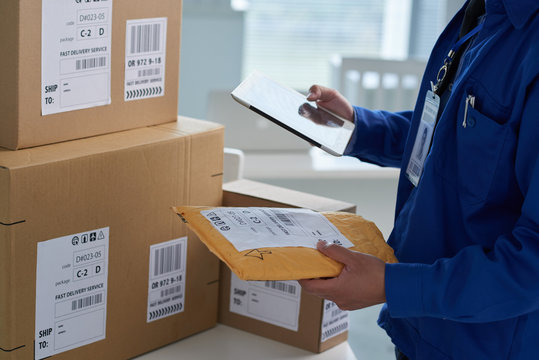Mexico is one of the largest and fastest-growing markets for skincare products in Latin America. With a population that increasingly values personal care and beauty, entering the Mexican market offers great potential for international brands.
However, before your skincare products can reach Mexican consumers, it's essential to know the country's legal regulations and labeling requirements to ensure regulatory compliance and a smooth import operation.
As is the case with many other products, such as textiles, it is important to follow legal requirements and regulations when importing different items to a market as large as Mexico. Complying with the required legal authorities, documentation and regulations will become a facilitator that will allow your beauty or skin care products to go through the import process in a more optimal time.
In this blog post, we'll guide you through the key things to consider if you want to sell skin care products in Mexico.
Regulatory Authority: COFEPRIS
In Mexico, the main regulatory body for health and safety, including cosmetics and skin care products, is the COFEPRIS (Federal Commission for Protection against Health Risks). COFEPRIS is responsible for regulating and reviewing product safety in the health, food and cosmetics sectors. If you want to sell skin care products in Mexico, you must comply with COFEPRIS regulations to ensure that your products are safe and suitable for the market. The most recognized skincare brands, such as Neutrogena, Eucerin And Bioderma, among others, have the approval of COFEPRIS.

COFEPRIS oversees a variety of activities, including:
- Product registration: Certain skin care products, especially those with active ingredients that affect health (such as sunscreens, anti-aging creams or acne treatments), may require registration with COFEPRIS.
- Health and safety standards: COFEPRIS sets requirements on ingredients, quality and product safety, ensuring that they meet international standards.
Registration of skin care products in Mexico
In the country, skin care products are mainly divided into two categories: cosmetics And therapeutic products.
- Cosmetics: They are skin care products intended to beautify, modify the appearance or maintain skin health. Common examples are moisturizers, cleansers and toners.
- Therapeutic products: If your skincare product makes therapeutic claims (such as treating acne or reducing wrinkles), it could be classified as a medication or medical device under Mexican law. These products may require a more extensive review and approval process by COFEPRIS.

For the cosmetic products, although registration is not always mandatory, notification to COFEPRIS. This notification process involves submitting a product record that includes details such as ingredients, manufacturing process, and intended use.
In the case of therapeutic products, a formal record is needed, including clinical trials, ingredient testing and safety evaluations. This ensures that your products are safe for the market and that all regulations are complied with, opening the door to increased sales of your new beauty or skincare brand ready to expand internationally.
Labeling requirements for skin care products in Mexico
El proper labeling is essential for skin care products in Mexico. The country has strict guidelines that ensure that consumers have all the information they need to make informed decisions.
These regulations seek to protect public health and provide transparency regarding the product's ingredients, their use and safety. In addition, labeling and documentation standards are also designed to avoid misleading statements and ensure that the products are appropriate to the specific needs of Mexican consumers.

Key Labeling Requirements You Must Meet
a. Language requirement
All product labels must be on Spanish. This includes not only the main product label, but also any additional packaging or promotional material. Verify that all ingredients, instructions, warnings, and usage information are clearly expressed in Spanish.
If the cosmetic or personal care product is not labeled in Spanish, It cannot be marketed. The best option is to go to a customs broker and carry out the process of translating the necessary labels. Doing so before the import operation will facilitate the process and ensure that the new market trusts the brand.
b. Required information on the label
Skin care products must include the following information on their labeling:
- Product name: Clear and descriptive, indicating the function of the product.
- Ingredients: Complete list of ingredients used in the formulation, in descending order of concentration.
- Net content: The amount of product inside the package, in metric units (grams or milliliters).
- Manufacturer or dealer details: Name, address and contact details of the manufacturer, distributor or importer.
- Expiration date: If the product has a shelf life of less than 30 months, you must show the expiration date or best before use date.
- Instructions for use: Clear instructions on how to use the product properly.
- Precautions or Warnings: Any safety warnings (e.g. “for sensitive skin”, “avoid contact with eyes”).
- Registration or Notification Number: In the case of regulated products, the notification or registration number with the COFEPRIS must be on the label.
- Language: Everything must be in Spanish, with a language understandable to the Mexican market.
c. Claims and publicity
Caution should be taken with statements on packaging and advertising. Any statement that your product Treat or cure a skin condition (such as “acne treatment” or “wrinkle removal”) could cause COFEPRIS reclassify it as a medication. In that case, additional approvals, clinical data and a deeper regulatory analysis would be required.
Claims related to aesthetic benefits (such as “moisturizer” or “anti-aging”) are generally accepted for cosmetics, as long as they are not misleading.
d. Barcodes and compliance
All products must have a Barcode for tracking and sales purposes, especially if sold in physical stores. Make sure your packaging meets local bar coding and product identification standards.
A barcode system is also useful if you plan to work with a partner of Fulfillment, which ensures that products reach the final consumer at the right time and place.
Import requirements
If you plan to import your skincare products to Mexico, you must comply with the country's import regulations. The process generally includes:
- Customs Clearance: All shipments must go through customs before entering the market, which involves verifying that they meet labeling and security requirements.
- Import permissions: Depending on the product category, you may need an import permit for the COFEPRIS or other relevant authorities.
- Taxes and Fees: Import duties and taxes must be considered when calculating the cost of bringing products to Mexico. It is important to be up to date on treaties such as T-MEC (USMCA), which can impact rates.
Navigating these requirements can be complex, especially if you're not familiar with the local regulatory environment. Los import experts can play a crucial role in helping you successfully introduce your products to Mexico. They dominate the regulations of the COFEPRIS, customs processes and necessary documentation, guiding you in obtaining permits, labeling compliance and calculating duties and taxes.
Clinical Tests and Trials (for Therapeutic Claims)
If your skin care product makes therapeutic claims, such as curing or treating skin conditions, you'll need to provide evidence of its safety and efficacy. This usually involves carrying out clinical trials or dermatological tests. La COFEPRIS will require detailed reports of these studies before granting approval.
Cruelty-free products (that are not tested on animals) are more likely to be favorites in the market. According to Mexico Business, the 54% of consumers is switching to plant-based and cruelty-free products.
Compliance with international standards
Finally, it's important that your products comply with international quality standards, such as those established by the ISO (International Organization for Standardization) And the GMP (Good Manufacturing Practices).
Meeting these standards not only guarantees the safety and quality of your products, but also makes them more attractive to consumers and regulatory authorities in Mexico. In addition, it increases the credibility of your brand in a competitive market, where consumers are increasingly informed and cautious about the products they use.
Demonstrating a commitment to high-quality production processes will allow you to build trust and improve your brand's reputation, essential for long-term success in the region.
Conclusion
Comply with the regulations of the COFEPRIS, ensuring proper labeling in Spanish, and meeting import requirements and international standards are key steps in successfully expanding your skincare brand in Mexico.

Selling skin care products in Mexico can be an exciting and profitable opportunity, but understanding the legal and regulatory landscape is critical. From complying with the regulations of the COFEPRIS Until you meet labeling requirements and provide appropriate documentation, careful planning is key to ensuring that your products enter the market smoothly.
By following these guidelines, you not only protect your brand, but you also build trust with consumers and ensure that your products are safe, effective and in line with Mexican regulations.
Successfully navigating the Mexican market requires attention to detail, patience, and the right partnerships. With a solid understanding of local requirements and a proactive approach to regulatory compliance, your skincare brand will be well-positioned for long-term success.
Cubbo's Note
Ready to expand to Mexico? Make sure consult with experts in logistics or local representatives to guide you through the regulatory process and help your skincare brand thrive in this dynamic market.








